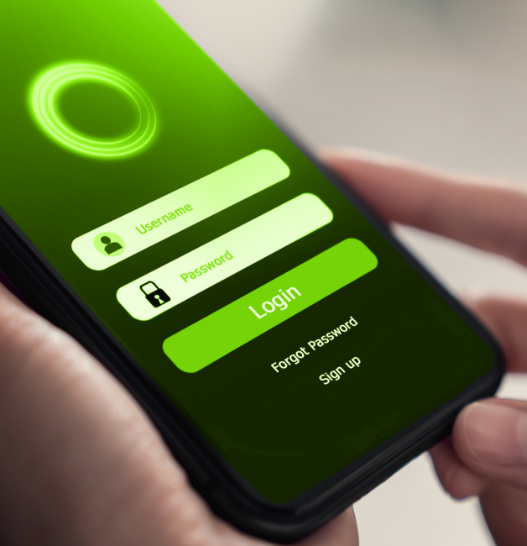A world without barriers allows all persons in our society to participate fully in everyday life. Accordingly, the topic is also of great (and ever-increasing) importance for legislators.
In this article we will find out which laws you should know as a manufacturer of products, services and websites and who exactly is affected by the respective laws.
The following applies: Of the first three, most are aimed at public bodies – but this does not mean that you as a product manufacturer cannot be indirectly affected by them. For you as a manufacturer of products, services and websites, then, the Accessibility Strengthening Act is of particular interest!
We take a look at:
- The Disability Equality Act (BGG).
- The Web Content Accessibility Guidelines 2.1 (WCAG 2.1)
- The Ordinance on the Creation of Barrier-Free Information Technology
- in Accordance with the Act on Equal Opportunities for Persons with Disabilities, also known as the Barrier-Free Information Technology Ordinance (BITV 2.0)
- The harmonized standard EN 301 549
- The Accessibility Strengthening Act (BfsG)
We always provide a brief overview of what the law requires. More in-depth articles on the individual requirements of the laws will follow.
Disability Equality Act (Behindertengleichstellungsgesetz – BGG)
The Act on the Equality of Persons with Disabilities, also known as the Act on Equal Opportunities for Persons with Disabilities (BGG), regulates not only the design of buildings and other facilities, but also that public bodies are obliged to make their own websites and mobile applications barrier-free.
These are “technical commodities, information processing systems, acoustic and visual information sources and communication facilities, as well as other designed living areas, if they can be found, accessed and used by people with disabilities in the generally accepted manner, without particular difficulty and basically without outside assistance.” (Source: BGG §4)
12a obliges federal public bodies to make their own websites, mobile applications barrier-free. This is linked to a “declaration on accessibility” described in §12b and an obligation to report on the status of accessibility (Source: BGG §12c).
To implement § 12 of the BGG, there is the Barrier-Free Information Technology Ordinance 2.0 (BITV 2.0 – see below).
BGG – Who is affected?
- Public institutions and authorities: The BGG is primarily aimed at the “public authorities”, i.e. federal authorities and institutions. These are obliged to implement the requirements of the BGG.Representatives for the interests of persons with disabilities: The law provides for the establishment of commissioners for the interests of persons with disabilities at various political levels. These officers have the task of monitoring and accompanying the implementation of equality policy goals.
- Companies and service providers: Even though the BGG is primarily aimed at the public sector, private companies and service providers may be indirectly affected, especially if they have contractual relationships with public institutions or receive public funding.
Note: State Equality Acts: The individual federal states have enacted their own equality laws, which pursue similar goals to the BGG but relate to facilities and services at the state level.
Web Content Accessibility Guidelines 2.1 (WCAG 2.1)
WCAG 2.1, short for Web Content Accessibility Guidelines 2.1, is a set of guidelines and recommendations aimed at making web content more accessible to people with disabilities. These guidelines were created by the Web Accessibility Initiative (WAI) of the World Wide Web Consortium (W3C).
The guidelines are divided into three levels of compliance:
Level A: The most basic web accessibility features.
Level AA: Greater accessibility and recommended for most websites.
Level AAA: The most stringent and comprehensive requirements that cannot be met for every website.
WCAG 2.1 expanded on the previous version, WCAG 2.0, and added additional success criteria, particularly to address mobile devices and users with cognitive disabilities.
It is important to note that compliance with WCAG guidelines is not only beneficial for people with disabilities, but often improves the user experience for all. Many countries have also incorporated these guidelines into laws and regulations to ensure digital accessibility.
What are the accessibility requirements?
The guidelines are organized into four main principles known as POUR. The acronym originated from the English terms of the main principles (Perceivable, Operable, Understandable, Robust):
- Perceivable: Information and controls must be perceivable by users.
- Operable: Operating elements and navigation must be operable.
- Understandable: Information and operation must be comprehensible.
- Robust: Content must be reliably interpretable, including by various user agents (i.e., software for users to access Web content), including assistive technologies.
The specific requirements are divided into three levels, these correspond to those of WCAG.
WCAG 2.1 adds additional success criteria compared to WCAG 2.0, particularly related to mobile devices, people with low vision, and people with cognitive disabilities.
For most web projects, and especially for public institutions and services, it is often recommended or required to meet at least the level AA requirements of WCAG.
WCAG 2.1 – Who is affected?
- Website owners and developers: They must ensure that their websites and web applications comply with WCAG guidelines, especially if regulatory requirements or industry standards mandate it.
- Businesses and organizations: Many countries have accessibility laws or regulations that require businesses and public organizations to have accessible websites.
- Tool developers: This includes developers of content management systems (CMS), web development tools, and other technologies used to create web content. These tools should support features that make it easier to create accessible content.
Barrier-free Information Technology Ordinance (BITV 2.0)
BITV 2.0 stands for “Barrier-free Information Technology Ordinance 2.0” and is a German ordinance that specifies how public websites and internal IT systems of federal authorities must be designed to be barrier-free in order to provide equal access for all people, especially people with disabilities.
The goal: “The Barrier-Free Information Technology Ordinance serves the goal of enabling and ensuring a comprehensive and fundamentally unrestricted barrier-free design of modern information and communication technology.” (BITV 2.0 § 1)
BITV 2.0 is based on the Web Content Accessibility Guidelines (WCAG) 2.0 published by the Web Accessibility Initiative (WAI) of the World Wide Web Consortium (W3C).
BITV 2.0 defines specific requirements and testing steps for each of the principles defined in the WCAG to ensure that websites and applications enable barrier-free access for all users.
§2 Lists the following areas of application:
- Websites
- Mobile applications
- Electronically supported administrative processes
- Graphical program interfaces that are either integrated into the above three cases or “made available for use by public entities”
BITV 2.0 – Who is affected?
In summary, it is primarily the public agencies of the federal government that are directly affected by BITV 2.0. But the principles of accessibility and the resulting requirements are also relevant for many other stakeholders in Germany.
BITV 2.0 (Barrier-free Information Technology Ordinance 2.0) primarily affects federal public bodies in Germany. This includes in detail:
- Federal authorities and institutions: All federal authorities, offices, ministries and other institutions must design their digital offerings, especially websites and applications, to be barrier-free in accordance with BITV 2.0.
- Legal entities under public law: These can be, for example, organizations that perform public tasks but are not directly considered state institutions. If they are subordinate to the federal government, they too are required to design their information and communication technology to be barrier-free.
Not directly affected by BITV 2.0, but still relevant:
- States and municipalities: The federal states have their own regulations on accessibility that are based on BITV 2.0. Some states have issued their own regulations that apply to state-owned facilities and municipalities.
- Private companies: While private companies are not directly obligated by BITV 2.0, there are other legal foundations that may also require them to be accessible. For example, legal requirements or tender conditions could specify accessibility as a criterion. In addition, in terms of inclusion and customer accessibility, it generally makes sense to make websites and applications accessible.
- Developers and web designers: Even if they are not directly obligated by the regulation, in practice it is often they who have to implement accessible websites and applications. It is therefore important for them to know and understand the requirements of BITV 2.0.
Harmonized standard EN 301 549
The harmonized standard EN 301 549 relates to accessibility requirements for information and communication technology (ICT) products and services. It specifies detailed requirements to ensure that ICT products and services are accessible to all users, including people with disabilities.
This standard covers a wide range of ICT products and services, including computer hardware, operating systems, websites, software, telecommunications equipment, digital interfaces, documents, and more.
EN 301 549 is often used as a reference point or minimum standard in legislation and regulations governing ICT accessibility in different regions or countries.
The standard is modular, so it can be applied flexibly to different products and services. It contains both general requirements and specific requirements for certain product categories or services.
It is regularly reviewed and updated to reflect technological advances and evolving requirements.
Harmonized standard EN 301 549 – Who is affected?
- Manufacturers of ICT products and services: Companies that produce or provide hardware, software or other ICT services should design their products and services in accordance with the requirements of EN 301 549, especially if they operate in markets where compliance with this standard is mandatory or expected.
- Public entities: In many countries or regions that have accessibility regulations for public services, public administration ICT systems and services must comply with this standard.
- Web content providers: This includes companies, organizations, or individuals that create websites or web applications. They should ensure that their content and platforms meet the accessibility requirements of EN 301 549.
- ICT professionals and developers: this group needs to familiarize themselves with the requirements and best practices of EN 301 549 in order to develop products and services that meet accessibility standards.
- Purchasers and procurers: Particularly in organizations and government agencies that value accessibility, procurers can use compliance with EN 301 549 as a criterion for purchasing or procuring ICT products and services.
The Accessibility Strengthening Act (Barrierefreiheitsstärkungsgesetz – BfsG)
With the Accessibility Strengthening Act, many more manufacturers, importers, and distributors will have to address accessibility issues in the future than they have in the past.
The BFSG applies to the following products:
- Hardware systems including operating systems
- Self-service terminals: payment terminals, ATMs, ticket vending machines, check-in machines, self-service terminals for providing information
- Consumer terminals with interactive capabilities used for telecommunications services or for access to audiovisual media services
- E-book readers
The BFSG applies to the following services:
- Telecommunications services
- Elements of passenger transport services: websites, apps, electronic tickets and ticketing services, provision of transport information, interactive self-service terminals
- Banking services for consumers
- E-books and software intended for this purpose
- E-commerce services
The goal: A product or service and its provided packaging and information must be designed to be accessible. The law specifies exactly what this must look like in many small-scale requirements that are product-specific.
The BfsG will come into force on 28.07.2025. From this date, all products and services listed therein must be brought onto the market barrier-free. Those who do not comply risk having their own product withdrawn from the market.
If you would like more in-depth information about the Accessibility Strengthening Act, please see our article “What is the Accessibility Strengthening Act?“.
Accessibility Strengthening Act – Who is affected?
- Manufacturers of the above services and products
- Importers of the above services and products
- Distributors of the above services and products
- Also, any microenterprise that manufactures or circulates products
(Excluded: Micro-enterprises providing services. The following limits apply here: The company must have less than 10 employees. It must generate no more than 2 million euros in annual sales).
Conclusion
Whether and how you are affected by certain laws depends on many factors. The fact is that the Accessibility Strengthening Act makes many more manufacturers of products, services and websites responsible, who were not previously affected by any of the above laws.
Do you need to find your way through the jungle of rules and want to know what exactly is required for your product? Do you want to specifically improve the accessibility of your product, service or website in order to be up to date with the legal requirements in the future?
Feel free to contact us directly via our contact form. We look forward to hearing from you!



